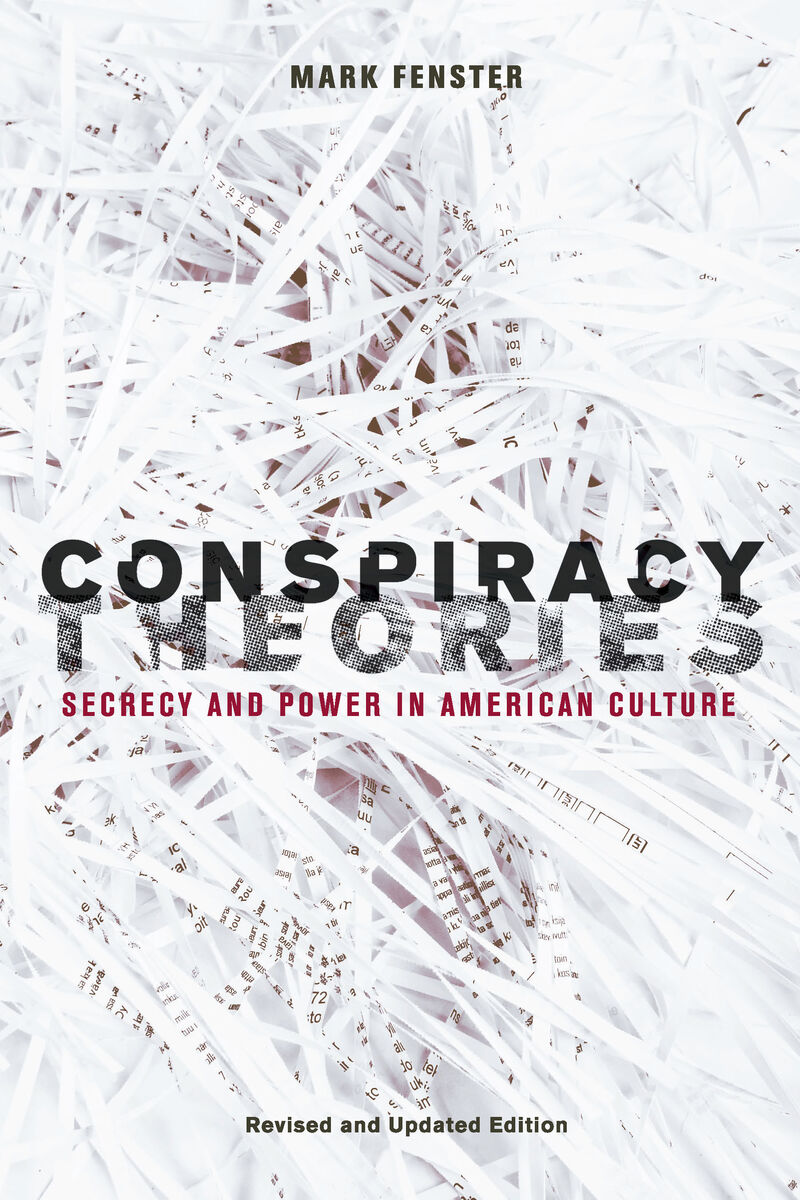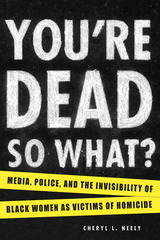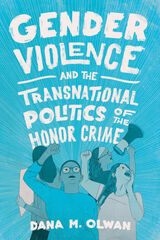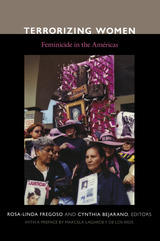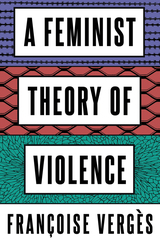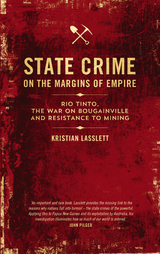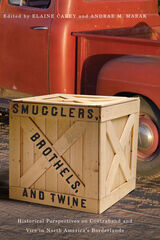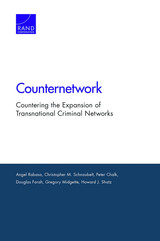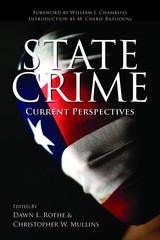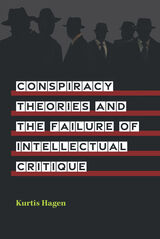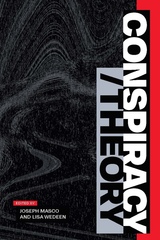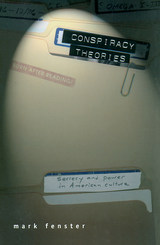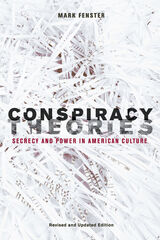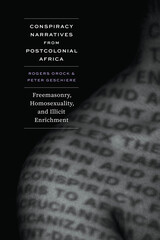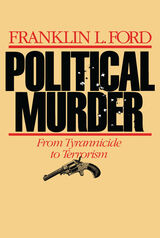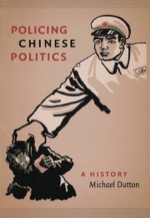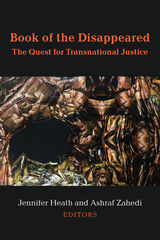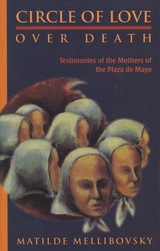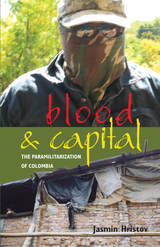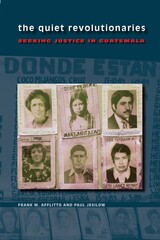Conspiracy Theories: Secrecy and Power in American Culture
by Mark Fenster
University of Minnesota Press, 2008
Paper: 978-0-8166-5494-9
Library of Congress Classification HV6275.F45 2008
Dewey Decimal Classification 973
Paper: 978-0-8166-5494-9
Library of Congress Classification HV6275.F45 2008
Dewey Decimal Classification 973
ABOUT THIS BOOK | AUTHOR BIOGRAPHY | TOC
ABOUT THIS BOOK
The popular study of conspiracy theories and why we should pay attention—completely updated for the post-9/11 world
JFK, Karl Marx, the Pope, Aristotle Onassis, Howard Hughes, Fox Mulder, Bill Clinton, both George Bushes—all have been linked to vastly complicated global (or even galactic) intrigues. Two years after Mark Fenster first published Conspiracy Theories, the attacks of 9/11 stirred the imaginations of a new generation of believers. Before the black box from United 93 had even been found, there were theories put forth from the implausible to the offensive and outrageous.
In this new edition of the landmark work, and the first in-depth look at the conspiracy communities that formed to debunk the 9/11 Commission Report, Fenster shows that conspiracy theories play an important role in U.S. democracy. Examining how and why they circulate through mass culture, he contends, helps us better understand society as a whole. Ranging from The Da Vinci Code to the intellectual history of Richard Hofstadter, he argues that dismissing conspiracy theories as pathological or marginal flattens contemporary politics and culture because they are—contrary to popular portrayal—an intense articulation of populism and, at their essence, are strident calls for a better, more transparent government. Fenster has demonstrated once again that the people who claim someone’s after us are, at least, worth hearing.AUTHOR BIOGRAPHY
Mark Fenster is professor at the University of Florida Law School.
TABLE OF CONTENTS
Contents
Preface
Introduction: We're All Conspiracy Theorists Now
I. Conspiracy as Politics
1. Theorizing Conspiracy Politics: The Problem of the "Paranoid Style"
2. When the Senator Met the Commander: From Pathology to Populism
II. Conspiracy as Cultural Practice
3. Finding the Plot: Conspiracy Theory as Interpretation
4. Uncovering the Plot: Conspiracy Theory as Narrative
5. Plotting the Rush: Conspiracy, Community, and Play
III. Conspiracy Communities
6. The Prophetic Plot: Millennialism and Christian Conspiracy Theory
7. A Failure of Imagination: Competing Narratives of 9/11 Truth
Afterword: Conspiracy Theory, Cultural Studies, and the Trouble with Populism
Notes
Index
Preface
My first significant political memory: Richard Nixon's resignation when I was eleven years old. It was a family moment, the closest thing to a major public trauma I had experienced during my conscious life (I was too young to be fully cognizant of or to remember the Kennedy and King assassinations), and my savvy older sister put her portable audiocassette recorder up to the television's little speaker, preserving the event for posterity. By the time of his resignation, Nixon seemed like a bad man, although I had secretly rooted for him against McGovern just to be contrary to all of the older kids at my liberal Quaker school. Along with many others on the latter end of the baby boom who were too young to experience the political assassinations and Vietnam War protests of the 1960s, it was Nixon's ultimate ignominy that instilled in me the peculiarly American antipathy to politics and politicians. Nixon led me to conclude that you can't really trust powerful people, and he led me to suspect that events and machinations kept secret are probably more important than what is actually revealed.
Perhaps that suspicion, like my tendency to contrarianism, was always meant to be. The first book I remember reading and enjoying was a children's picture book, The Secret Three.1 Ostensibly the story of Mark, Billy, and Tom, three boys who form a secret club, the book's banal description of the boys' adventures was (for me, anyway) overshadowed by the intriguing way the boys meet. Mark and Billy learn of Tom's arrival on the island where they all live by finding an encrypted message that Tom had placed inside a bottle and tossed out to sea. Once they decode the message and meet Tom, they continue to develop new secrets and codes. Wherever you turn, the book implied, you might find a possible sign of some secret, a decipherable existence that would potentially fulfill a deep, perhaps unrecognized desire. The book itself was advertised as part of publisher Harper & Row's I Can Read series; while clearly an allusion to its simple language, large typeface, and vivid illustrations, the series name took on added meaning in a story about the proliferation of secret signs scattered throughout the world. The Secret Three taught me that learning to read was a process not only of understanding the plain meaning of writing but also of finding and correctly interpreting hidden codes and messages.
The most important secret of Mark, Billy, and Tom's club was not its mere existence. Rather, its true secret, its infantile but resonant source of power, its "position of exception" in Georg Simmel's phrase,2 lay in the exclusivity of its membership and language. Thanks to the club, envy, concern, and longing haunted the otherwise banal boyhood utopia that the book offered me as a fantasy. I wanted at once to join the group, to replicate it in my own lonely childhood, and to expose and dismantle it. Nixon's clubhouse, also known as the White House, was also filled with powerful men doing secretive things and therefore paralleled my own childhood fantasies and fears.
My contradictory response to The Secret Three, as well as Nixon's effect on me, is analogous to the conception of power present in a particular strain of contemporary American populist discourse: conspiracy theory. Imagine the experience of "finding" evidence of a "conspiracy"-not especially difficult, given the circulation of novels, films, and nonfiction narratives that represent such an event. For those who look for such evidence or who experience this moment of discovery, which initiates a gravitational pull into a world of suspicion of doubt, it is a cathectic moment, an instant in which the spine tingles, the pulse quickens, the mind focuses. A secret group, wielding unknown but awesome power, exists. The evidence proving its existence and power become a source of endless further consideration, interpretation, and investigation, and a reason to find and uncover the plot that both exemplifies and causes one's own powerlessness. This book seeks to interrogate the social, cultural, and psychic relationship between "conspiracy" and "theorist," between individual and group interpretation and narrative strategies, between populist notions of "the people" and "the powerful." Ultimately, I propose that conspiracy theory operates broadly as a political and cultural practice that longs for a perfectly transparent, accessible democracy-an end that, even if it were possible, conspiracy theory can hardly imagine and cannot attain.
Although it retains the basic argument and a significant portion of the content from the original edition, this revised and updated edition of Conspiracy Theories tries to clarify the earlier book's insights, make them more accessible to a wider readership, and, most significantly, extend the argument to the conspiracy theories surrounding the attacks of September 11, 2001. My interest in returning to this project is, admittedly, partly an effort to keep the book relevant, as it makes little sense to promote a book about conspiracy theory that fails to cover an event that has generated more conspiracy theories and theorists since the assassination era of the 1960s. But I also intend this republication to meet an important need: a broadly understandable, interdisciplinary account of a crucial and pervasive political and cultural phenomenon, as significant today as ever before. Too frequently, commentators glibly dismiss conspiracy theory as marginal and pathological, a dismissal that flattens its complexity and misunderstands its role in contemporary politics and culture. Also too frequently, academics either share this disregard or, if they attempt to depart from this approach, fail to address an audience outside of their (our) own small world. I regret that the original edition of Conspiracy Theories occasionally fell into the latter trap, either through leaden prose or jargon. I have tried to move the thickest and least necessary of that jargon into the notes, while retaining the insights provided by technical social theory and social science into the practices and significance of conspiracy theory.
As with the previous edition, I would like to acknowledge the enormous influence of a number of teachers, friends, and colleagues over the years, including Joli Jensen, Janet Staiger, Horace Newcomb, Tom Schatz, Larry Grossberg, Jim Carey, Chris Anderson, Jeff Sconce, Jim Wehmeyer, Matt Wray, Eric Hayot, Charles Acland, Michael Curtin, and John Henry Schlegel. Thanks to Wesley Beal and Jennifer Kent for able research assistance on this updated edition. I thank the editors at the University of Minnesota Press with whom I worked, including, on the first edition, Janaki Bakhle, Lisa Freeman, Micah Kleit, and Jennifer Moore, and, on the present edition, Richard Morrison. Holly Kruse's support and affection were enormously important to the first edition, and therefore to this one as well.
This book could not have been completed without the help of those closest to me: my father, Marvin Fenster, whose unflagging support I likely did not deserve, and my mother, Louise Rapoport Fenster, whose passing during the writing of the original edition I am still learning to live with. The revised edition (and more important, my life) has been much improved by the contributions of Trysh Travis, whose love, companionship, ideas, and editorial skills have made life very enjoyable and conspiratorial indeed.
Notes to Preface
Introduction: We're All Conspiracy Theorists Now
Two propositions dominate discussions of conspiracy theory. The first maintains that conspiracy theory, which I will define simply here as the conviction that a secret, omnipotent individual or group covertly controls the political and social order or some part thereof, circulate solely on the margins of society. Holding incredible, dangerous beliefs, conspiracy theorists are political extremists and unsavory characters -- Oliver Stone, for instance, or members of the John Birch Society. They question whether the United States is a benign, pluralistic democracy, they reject the notion that history moves through the triumph of progress and leadership and the vagaries of coincidence and mistake, and they appear to disdain the established institutions and channels of democratic politics. The label "conspiracy theorist" insinuates that a person is extreme, threatening, nuts.
The second proposition, equally prominent when concerned commentators discuss conspiracy theory, maintains that conspiracy theory has come to predominate American political culture.3 The specter of conspiracy circulates in the fictional trappings of movies, television shows, popular novels, video games, comic books, and even in an increasingly gullible and market-driven news media.4 Most pernicious, of course, is the well-trodden but suspect realm of cyberspace, the Petri dish for paranoids.5 Conspiracy theory's ubiquity, we are told, poisons our political system, culture, and public sphere to an unprecedented degree. They -- or is it we? -- are all conspiracy theorists now.
Margins or ubiquity: in this political and cultural moment, it seems, we either face the threat that conspiracy theory will invade from the hinterlands or we must respond to the fact that it has captured popular consciousness. This book does not aim to resolve these competing descriptive claims -- indeed, I think one can marshal evidence to claim that both are correct. A relatively small proportion of Americans seems to believe firmly that a grand conspiracy is the causal engine of politics and history, while a much larger proportion of the public engages in conspiracy theory at some level, whether for pleasure or as a potential explanation for events in their lives or in the country. Both claims, however, agree that conspiracy theory, in its dangerous conception of power, nationhood, and history, represents a dire threat. To illustrate, consider two recent examples, one from investigative journalism and the other from popular culture, in which assertions about conspiracy theory's otherness and grave or potential danger drive how conspiracy theory is described and understood.
Dark Alliance: The Journalist as Conspiracy Theorist
A series of stories written by investigative journalist Gary Webb and published in the San Jose Mercury News in 1996 reported that agents affiliated with the Contra rebels, revolutionaries in the Central American nation of Nicaragua with ties to the CIA, played a central role in the introduction of crack cocaine to American cities, and especially throughout African-American neighborhoods in Southern California.6 The stories, collectively titled "Dark Alliance," circulated widely on the Mercury News's relatively state-of-the-art website whose splash page featured a silhouette of a figure smoking a crack pipe superimposed on top of the CIA's official seal. "Dark Alliance" not only repeated longstanding rumors and news reports of CIA ties to Central and South American drug dealers, it extended them by claiming that at least some of the Contra-distributed drugs were sold to American users. Published at a time when the World Wide Web had begun to reach critical mass, the stories received national coverage despite being published by a regional newspaper and they caused an uproar and political protest, especially among African Americans in Los Angeles.7
It is now ten years since "Dark Alliance" first appeared, and the consensus view among journalists and researchers who have reviewed Webb's stories and have expertise on the Contras and the CIA's role in Nicaragua is that the stories somewhat overstate and overplay the largely testimonial evidence Webb had gathered but nevertheless were neither false nor fantastic. This is true whether they sympathetic to or critical of Webb.8 The historical truth -- to the extent such a thing is discernible about controversial covert operations -- indicates that the basic outlines of the Mercury News stories were largely correct: there is no question that the CIA was involved in covert counter-revolutionary action in Nicaragua, nor that some Contra agents or individuals with ties to the Contras ran drugs and used some of the proceeds to purchase equipment and fund the revolutionary efforts in Nicaragua. Nor is it wrong to say that some CIA agents at some time knew of the Contras' activities, and, indeed, that some of those drugs may have been sold on the streets of South Central Los Angeles.9 The evidence supporting the connections between each of these propositions is not entirely irrefutable, but when stated carefully, the theses of Webb's stories are supported in the public record.
The stories had a life of their own, however. In suggesting that the Reagan Administration and the CIA assisted a revolutionary movement involved in drug trafficking, Webb's series led a segment of the American public (especially those most adversely affected by the ravages of crack cocaine) to infer that a government agency perpetrated an illegal, conspiratorial act that harmed Americans -- not to mention Nicaraguans. Recall the broader historical context within which this inference was drawn. The precise nature of the relationships among the characters in this story -- the CIA, the Contras, wholesale drug traffickers, and retail drug dealers -- was, and remains, unknown. The federal government and its intelligence community continue to hoard information about its Cold War-era engagement in proxy wars and counterrevolutionary campaigns, while their disclosures and pronouncements on the CIA's role in Nicaragua appear sufficiently strategic to warrant suspicion -- especially in light of the secret, illegal machinations revealed in the Iran-Contra scandal.10 A long history of allegations tie the CIA's covert operations to malevolent political forces in Central and South America (as well as in southeast Asia and Africa) that engaged in illegal activities, including drug dealing. In short, although these conspiratorial inferences went beyond what the "Dark Alliance" series described and could prove, such speculative, unsubstantiated conclusions were not irrational.
The nation's most-respected newspapers denounced "Dark Alliance" and condemned Webb's work for engaging in groundless speculation about government conspiracies and thereby exceeding the boundaries of acceptable investigative journalism.11 Faced with damning criticism from its competitors, the Mercury News ultimately apologized for "Dark Alliance" and demoted its reporter, irreparably damaging Gary Webb's career.12 Lowering journalistic standards was not the worst effect of the Mercury News's transgressions, however, according to critics of the series. The story was so overstated and overwrought, they maintained, that "Dark Alliance" spread viciously through a black community that was susceptible to absurd speculation and paranoid fantasies. This latter, quasi-sociological claim about the state of Black America sought to explain condescendingly how a population could fall prey to irresponsible reporting that alleged outrageous conspiracy. An article in Time, for example, noted a propensity in the African-American community to host a "Black Telegraph" of rumor-mongering that "has been a font of bizarre fantasies"; an op-ed in the Los Angeles Times by historian Michael Kazin described belief in the CIA-Contra-cocaine conspiracy as "paranoid" and suggested it was based on "the flimsiest of evidence"; while Timothy Golden, in an article accompanying his professional journalistic criticism of Webb's reporting, offered telling examples of average African-Americans' willingness to believe an investigative series whose "force . . . appears to have relatively little to do with the quality of the evidence that it marshals to its case." Each writer also conceded that the black community might have good historical reasons to be paranoid, of course, but they all rejected the notion that this excused its inability to distinguish fact from conspiratorial fiction, they suggested that conspiratorial fantasies pushed an already separate black community further to the margins.13 In his 1997 book Conspiracy: How the Paranoid Style Flourishes and Where It Comes From, Daniel Pipes saw no reason even to accept an excuse for blacks' adoption of conspiracy theory, which, he argued, was fueled by black journalists and leaders who "dislike the existing order and offer radical ideas about changing it." These spokesmen in turn have transformed the black community into an "organized group of malcontents" who prefer to lay the blame for their tragic circumstances on shadowy forces rather than assume it themselves.14 For Pipes, and to a lesser but still significant degree, for other mainstream critics, conspiracy theory's desperate, tempting, and dangerous call to and from the margins neither accepts nor belongs in the responsible public discourse that characterizes democracy.
The Da Vinci Code: The Novel and Conspiracy Theory
From the geopolitics of Central America and the tragedy of crack cocaine to the fictional banal: consider the phenomenon of The Da Vinci Code (2003), the enormously successful novel that has sold tens of millions of copies internationally.15 It posits a world filled with secret societies desperately fighting over suppressed knowledge, their existence exposed by characters who solve hidden clues embedded in famous works of Renaissance art and in word puzzles placed by a recent murder victim. At stake in this struggle are some of the basic tenets of Christian faith, including most prominently Jesus's status as divine Son of God, as well as the supposed truth of the Holy Grail -- which is merely a symbol for the womb of Mary Magdalene, who carried and then gave birth to Jesus's child and established a "royal bloodline" that secretly survives to the present. The struggle to control this information pits the Roman Catholic Church and the fundamentalist Catholic organization Opus Dei against the Priory of Sion, a secret society that attempts to protect the relics and writings that document the truth about Jesus and his descendents. Two characters serve as the novel's protagonists: Robert Langdon, professor of "Symbology" at Harvard, and Sophie Neveu, a cryptologist with the French National Police and granddaughter of the clue-leaving murder victim Jacques Sauni¿re, who had been a curator at the Louvre and, it turns out, Grand Master of the Priory of Sion. (Sophie, we learn at novel's end, is one of the last remaining descendents in the "royal bloodline.")
A complicated conspiracy lurks beneath the alternative religious and world history the novel proposes. The Church and Opus Dei want to destroy the Grail and, with it, the evidence that would contradict the basis of Church doctrine; to do so, they must defeat the Priory, who wants to preserve and maintain control over it. Langdon and Neveu, meanwhile, begin as innocents drawn into this struggle by the clues Neveu's grandfather has left. Deploying their ability to uncover secrets embedded in symbols and codes, as well as their desire to solve the murder with which the novel begins, they heroically attempt to protect the truth from those who would steal it. Decoding da Vinci, and thereby finding conspiracy, is the central action of the novel, and the book's invitation to decode and find is the key to its narrative momentum and pleasure. "Everyone loves a conspiracy," Langdon tells Neveu, and in a close reading of da Vinci's art, "the conspiracies [keep] coming" (169). Indeed, reports of the novel's success cited the cultural, aesthetic, and economic appeal of its conspiracy-themed plot. The book invites the reader into the "netherworld" of conspiracy theories, U.S. News & World Report suggested, while an article in the Los Angeles Times listed the novel as part of a "wave" of conspiracy theory in popular culture.16
Each act of decoding by the protagonists leads to another clue, until the great secret that is revealed is that the secret conspiracy itself is concerned above all with keeping knowledge secret. The heroes' role, they are told, is to make certain that "the information" about Jesus can survive (256). The novel's conspiracy theory thus is doubly about information: the characters and readers both gather information to learn about a conspiracy, and then they learn that the conspiracy itself is about the conspiratorial suppression and disclosure of information. Although putatively about the truth of historical Jesus, the Holy Grail is the object of a conspiratorial plot by the Church and Opus Dei, which hope to steal it, but it is also itself a conspiratorial plot on the part of the Priory, which hopes both to retain it and keep it hidden. The heroes, drawn to aid the Priory, and the readers, drawn to root for the heroes and to decode da Vinci along with them, become part of this latter conspiracy. Strangely, the novel's resolution -- which reveals Sophie's preeminent family but also allows the Priory's representatives to explain why this revelation must be kept secrect from the public -- invites readers within the Priory's circle. The conspiracy is thus everywhere within the novel and, in the novel's omnipresence as an international bestseller and blockbuster movie, the conspiracy exists outside the novel, in the world of popular culture and in the numerous conversations and book club meetings where friends and strangers discuss it. The Da Vinci Code's resolution suggests that the novel's readership is now part of a conspiracy that maintains the truth as a secret, and that the public imagined in the novel and non-readers in the real world live unaware of the secrets that remain available only to those initiates who can decode them. At the same time, initiates continue their conspiracy hunt even after they put their books down. They can read Brown's earlier novel starring Robert Langdon, Angels and Demons (which concerned another "real" secret society, the Illiminati),17 and await another, The Solomon Key (reportedly about the Freemasons). At least twenty books are available that attempt to debunk or explore further the novel's conspiracy, while the especially obsessed can take Code-specific tours of Paris to the sites and art works that the novel claims offer great symbolic meaning.18 Conspiracy is not a "theory" -- in fact, it is everywhere -- once you learn to see and read the code.
Conspiracy theory's ubiquity presents a problem for those implicated in the conspiracy it finds. The Da Vinci Code's heady mixture of fact, fiction, and conspiracy has led both Catholic and Protestant church leaders to worry that readers are unable to separate the true from the fantastic and may ultimately come to question their faith based on nothing more than paranoid fantasies about hidden secrets.19 This concern has extended beyond clerics. Summarizing her worries about the book's potentially harmful influence, the critic Laura Miller declared in the Sunday New York Times Book Review that "[t]he only thing more powerful than a worldwide conspiracy, it seems, is our desire to believe in one."20 Dan Brown exacerbated such anxiety when he claimed, soon after the book's publication, that The Da Vinci Code was the product of significant historical research in credible sources and offered an educational experience as well as a pleasurable one.21 In fact, as a wary reader can easily learn through a Google search, most of Brown's sources (many of which he cites in the novel itself) make claims that have been thoroughly discredited. But as Andrew Greeley noted in an interview on the Today Show, The Da Vinci Code ably exploits not only people's "love" of conspiracies but also the Church's lack of credibility, especially in the wake of its efforts to keep secret its clerical sex abuse scandals.22
We Are All Conspiracy Theorists Now
These quite different conspiracies, one putatively based in fact and the other thoroughly fictional, one political and the other religious, one circulating within a relatively narrow public and the other a mass cultural phenomenon, share certain qualities. Each concerns an alleged truth hidden by, and damaging to, an existing order. Each presents a narrative of heroic investigation -- an intrepid investigative reporter is punished for uncovering the truth in one, while the master interpreters of symbols and codes succeed in discovering, preserving the historical truth in the other. And at bottom, each suggests that although the underlying truth of a conspiracy remains hidden to the general public, anyone with enough fortitude and intelligence can find and properly interpret the evidence that the conspiracy makes available.
Similarly, accounts of "Dark Alliance" and The Da Vinci Code in the mainstream media and by authoritative commentators share certain characteristics. Besides identifying the inaccuracies in these texts, critics attempt to explain the texts' general appeal by explaining why and how they captivate audiences. On the one hand, conspiracy stories are simple, understandable, and attractive to people seeking an explanation for their woes. Conspiracy theory is tempting, too, because it preys on believers' weaknesses, including their excessive distrust of or cynicism about powerful institutions, as well as their stupidity and irrationality. Conspiracy theory's ability to captivate in turn has significant effects: it causes people to believe in falsehoods, to trust duplicitous or unprincipled sources, and to become alienated from prevailing orthodoxies and institutions. Underlying these accounts is the sense that some essential aspect of conspiracy theory and conspiracy theorists is not merely wrong but pathologically wrong.
Until the past decade, the pathology concept, which is most closely associated with the historian Richard Hofstadter's enormously influential characterization of conspiracy theory as an expression of the "paranoid style in American politics,"23 has dominated academic and intellectual approaches to political extremism and populist fear of conspiracy until the past decade -- and it remains dominant in many academic fields and in mainstream and elite discourse. Hofstadter described conspiracy theory as an alternative (though long-standing) element in American politics, one that operates at the margins but occasionally threatens the mainstream, consensus-driven operations of pluralist democracy. Although Hofstadter used the term "paranoid" analogically rather than in its clinical sense, by coupling it with the noun "style" he implied that conspiracy theory constitutes a malady or affliction that differs fundamentally from a healthy engagement in politics and surfaces in trivial and groundless claims made by marginal groups and individuals that can threaten the pluralist consensus of American democracy. He resolved the seemingly contradictory view that considers conspiracy theory as both marginal and pervasive by positing that the paranoid style always exists but dominates only occasionally and under certain conditions. Given conspiracy theory's apparent omnipresence and the crisis of legitimacy that worried commentators associate with it, the "paranoid style" concept can lead to an inherently frightening conclusion: in the contemporary political culture, the dangerously, pathologically marginal has become mainstream -- or at least afflicts some large, powerful segment of the population.
This book is premised on a contrary proposition: that conspiracy theory's prevalence is neither necessarily pernicious nor external to American politics and culture but instead an integral aspect of American, and perhaps modern and postmodern, life. Not simply an outlying "style" of American politics, conspiracy theory has always been a significant element of American political rhetoric, with wide-ranging, sometimes salutary effects.24 Populist concerns about the concentration of public and private power and of foreign control of domestic authority, for example, have long animated American political practice and governance.25 These fears help to explain, for example, the tri-partite, federal system of American government that dissipates power among co-equal horizontal branches and overlapping vertical seats of legislative and executive power. They also animate federal and state antitrust laws that seek to control and regulate the market power of private corporations. Populist fears of conspiracy have also played a remarkably productive role in American intellectual history. A secular Enlightenment rationality, theorizing and participating in intellectual and political revolutions and suspicious of authority, at once feared conspiracy and engaged in conspiratorial actions through writing and political and social action.26 Doing so, revolutionary colonists perceived power and agency to reside in the hands of humans rather than within a divine entity, and inscribed a limited, secular state and protections for individual rights in the construction of the new American nation and its national identity -- a state and identity that sought an end to elite, monarchical conspiracies even as they had itself been created by a revolutionary conspiracy.27 Conspiracy theory is thus an aspect of the longstanding populist strain in American political culture -- an especially intense strain, to be sure, and one that can have violent, racist, and anti-democratic effects (as well as salutary and democracy-enhancing ones) on the political and social order, but a strain that is neither independent from, nor necessarily threatening to, the country's political institutions or political culture.28
Nor, indeed, does the suspicion that conspiracies occur necessarily make one crazy or paranoid. Politics encourages conspiracy of one sort or another because successful governance frequently requires the privileges and advantages afforded by secrecy and the levers of instrumental power.29 Secretly collaborative and even collusive behavior may enable political actors to achieve an agreed-upon end. Such conduct, of course, can be illegal or can seek to achieve illegal ends, but withholding information prior to (or even after) a decision is made or a compromise is reached can also serve as a legitimate administrative or governing strategy. Political opposition, in turn, attempts to take advantage of such actions by drawing attention to them and arguing that secrecy suggests corruption, perfidy, even treason. Governance and politics create situations in which multiple institutional entities struggle over limited power and resources, strategically engage in opaque and secretive behavior, and then strategically criticize their opponents' relative power, opacity, and secrecy in order to gain political and rhetorical advantage. The fact that complex, secret conspiracies might occur makes the evaluation of any somewhat plausible conspiracy theory exceedingly difficult, as no a priori grounds exist for distinguishing correct, or at least warranted, conspiracy theories from incorrect or unwarranted ones.30 This indeterminacy inspires pitched rhetorical battles for political popularity and legitimacy, as conspiracy theory serves as a means to rally support ("we must fight against the secret, powerful interests that oppose us") and to condemn opponents as part of a conspiracy ("they threaten our interests and way of life"); and, in turn, to delegitimate the opposition by branding their beliefs as paranoid ("if you believe that, you must be a conspiracy theorist"). In this respect, both conspiracy and conspiracy theory frequently serve as political strategies, not pathologies.
Finally, and not unimportantly, significant, illegal conspiracies do occur.31 The Da Vinci Code and the conspiracy it alleges may be mostly fantasy, but it is a matter of historical record that the Reagan Administration illegally funded the Nicaraguan Contras -- even if no clear proof exists of governmental complicity with Contra agents to supply cocaine to American dealers. Foreign covert actions that employ political assassinations and suborn subversion of democratic and revolutionary movements, as well as domestic policies of covert surveillance and "countersubversion" such as the FBI's COINTELPRO program, have played important roles in twentieth-century history. The Jim Crow era of racial apartheid required covert, conspiratorial acts -- indeed, given the history of both overt and secret state-sponsored racial subordination in America, African Americans frequently have a defensible claim that someone is out to get them.32 Secretive alliances between private individuals and groups with shared class interests do enjoy control over seats of public and private power that is greater than their numbers would allow them in a purely representative, thoroughly accountable democratic state in which well-informed voters participate and knowledgeably vote. Given the history of conspiracy and the inequitable distribution of access to capital and political power, the notion that conspiracy theory necessarily expresses a political pathology ignores the fact that it can correctly identify present and historical wrongs.
To be sure, conspiracy theory is frequently wrong -- and outrageously, even seemingly pathologically so, at times. Totalizing conspiracy theories frequently lack substantive proof, rely on dizzying leaps of logic, and oversimplify the political, economic, and social structures of power. Structural, institutionally based inequities in the distribution of power, capital, and resources, and the manipulation and abuse of state power to establish, maintain, and extend political control, do not constitute conspiracy in the sense that conspiracy theorists would describe -- as some anomalous, apocalyptic moment within a heretofore perfect democratic republic. Rather, they constitute the political economic consequences of capitalism and an inevitably imperfect system of politics and governance. More dangerously, conspiracy theories can express, and in American history frequently have helped organize, virulent hostility to racial, ethnic, religious, sexual, or political others.
Even if it can constitute a pathological threat to democracy, then, conspiracy theory does not necessarily do so. We may prefer a rational political discourse in which claims about the existence of a conspiracy require more empirical grounding than conspiracy theorists generally provide. We may also prefer a less divisive means to rally support and condemn opposition. But even if they could be widely accepted and implemented, such rational ideals are not the only elements of the political discourse we have. Conspiracy theory does not pose a threat from outside some healthy center of political engagement -- rather, it is an historical and perhaps necessary part of capitalism and democracy.
At the same time, the presumption that conspiracy theory represents nothing more than pathology simplifies and flattens our understanding of popular political belief generally and conspiracy theory in particular. It presumes both that some pathology-free position exists and that the pathogen can be eradicated from individuals beset by it and a society infused with it. But an approach that defines conspiracy theory as a set of political beliefs that can be described within existing frameworks of political behavior and evaluated within normative schemas as extremist or pathological ultimately disappoints: it can do little more than map these activities and beliefs onto limited conceptions of rational or irrational actions. Equally important, the pathology approach ignores conspiracy theory's internal tensions. In viewing the democratic order as a sham, conspiracy theory demonstrates anti-democratic tendencies; embedded within many conspiracy theories and their understanding of power, however, is a longing for a better, more transparent and representative elected government. Conspiracy theory rejects an existing political or social order, but does so in the belief that a better one is possible -- one that, in some conspiracy theories, would be more democratic and more equitable.
Part I of this book summarizes, historicizes, and critiques the pathology approach to conspiracy theory. It closely reads Hofstadter's work and that of his contemporaries during the 1960s in Chapter 1, and then traces the effects of that work in the more recent analysis of the militia movement, which during the mid-1990s was a leading proponent of conspiracy theories, in Chapter 2. A reading of conspiracy theory that understands it merely as a form of pathological, marginal politics, Part I argues, is inevitably partial, although Hofstadter's attention to conspiracy theory's cultural practices and populist underpinnings offers a base upon which an alternative approach can build.
Part II offers one such alternative approach by presenting ways of understanding how conspiracy theory works within political culture -- the constitutive cultural practices and signifying system through which the social and political order is communicated, reproduced, experienced, and explored -- and to what effect.33 Understanding conspiracy theory as an aspect of popular political culture offers a symptomatic critique of conspiracy theory and a cultural analysis of the signifying practices of its endless circulation through countless cultural texts such as films, television, novels, fanzines, computer networks, and the like. If conspiracy theory is, in Christopher Hitchens's provocative terms, "the white noise which moves in to fill the vacuity of the official version,"34 then we must understand the noise of popular politics. In this regard, this book is part of a larger project, that its first edition helped initiate, of scholars working within a range of humanistic disciplines that attempt to view conspiracy theory as a specifically cultural and political phenomenon and that, like Hofstadter in an earlier era (although to different normative ends), apply contemporary cultural and political theory to its analysis.35
Chapters 3 and 4 argue that conspiracy theory operates as a cultural practice of interpretation and as a narrative form that circulate throughout political campaigns and movements, journalism, and popular culture. By "cultural practice of interpretation," Chapter 3 explains, I mean that in order to construct a conspiracy theory, a theorist must, in the first instance, reinterpret the meaning and significance of historical and current events as evidence of some hidden truth. Driven by a circular, inexhaustible desire for more information to prove a conspiracy's existence, this active, endless interpretive practice never arrives at a final, determinate answer -- the conspiracy always remains identifiable but elusive and never entirely knowable. As an interpretive practice, conspiracy theory represents an impossible, almost utopian drive to seize and fetishize individual signs in order to place them within interpretive structures that unsuccessfully attempt to stop the signs' unlimited signification. This process ultimately directs the theorist's desire for political engagement towards a signifying regime of endless possibilities, where conspiracy reveals itself in every new piece of evidence. The conspiracy theorist, like The Da Vinci Code heroes and "Dark Alliance" readers who inferred a direct and systematic CIA-Contras-cocaine connection, interprets and then draws links among disparate pieces of evidence -- and in this practice finds conspiracy. To illustrate this practice, Chapter 3 analyzes some of the prominent theories that circulated about the Bill Clinton presidency.
Conspiracy theory's drive to interpret moves incessantly towards a narrative structure, one whose logic suggests an efficient coherence. This is the focus of Chapter 4, which explains the conspiracy narrative at the formal and narratological level, and uses Oliver Stone's JFK, "The Gemstone File" (a famous conspiracy document that originally circulated in an abbreviated Skeleton Key to the Gemstone File during the 1970s), and the television series The X-Files. All of the messy details of contemporary and historical politics, conspiracy theory asserts, are merely effects caused by a single narrative agent (the CIA in "Dark Alliance," for example, and Opus Dei and the Catholic Church in The Da Vinci Code). This agent has some clear, rational motivation that the theorist has isolated. Further evidence of the conspiracy's existence and its inevitable progress towards completion emerges -- or will emerge -- with the passage of time. But this efficient coherence of agency, movement, and logic continually threatens to unravel, as the narrator -- the theorist/ author -- attempts to manage the actual complexity of history. The resolution that a conspiracy theory ultimately offers appears at once procrustean, fitting complex events into a simple schema, and increasingly ramshackle as it attempts to accommodate a proliferation of complicated and conflicting data. More troubling still, the narrative faces the nearly impossible burden of finding an ending. A conclusion would call a halt to interpretation -- conspiracy theory's key practice and source of pleasure -- by suggesting either that the conspiracy has won or that it did not represent the existential threat it seemed to promise. Either ending is unsatisfactory: the former offers defeat by an enemy, while the latter suggests a formal defeat of what was clearly a lesser conspiratorial threat.
Chapter 5 turns to the question of how conspiracy theories are utilized by groups and individuals. Conspiracy theory offers certain satisfactions in its formal qualities and participatory practices, and in its fluid movement between politics and culture. Popular novels and games featuring conspiracy, even if tied to a singularly frightening revelation, constitute a form of play and sense of pleasure in which participants can "experience" the rush and vertiginous feelings associated with discovering conspiracy, and have the opportunity to create conspiracy narratives through imaginative interpretive efforts. These individual pleasures can lead to an individual to find or to found a conspiracy community that engages in collective investigative and political action. Three examples of conspiracy communities discussed over the course of the book are the militia movement (described in Chapter 2), the 9/11 "truth movement" (discussed in Chapter 7, which concerns 9/11 conspiracy theories), and the subcultures of conspiracy theorists that became increasingly organized during the 1990s through fanzines, independent book publishing, and conferences, which is the described in Chapter 5.
The idea of a "conspiracy community" appears paradoxical for two reasons. First, conspiracy theory assumes a disabling vision of political power in which control is always elsewhere, and it suggests political engagement that is either vanguardist (e.g., a "truth movement" attempting to lead others to action while dismissing others as knowing or unwitting co-conspirators) or separatist (e.g., radical "White Power" and Christian Identity sects that remove themselves from society). Second, conspiracy theory suspects everyone of complicity with the conspiracy, making collective action quite different -- if no one can be trusted, how safe or worthwhile is it to work with others? At particular conjunctures, however, it enables the construction of a kind of secular, shadow intellectual collective that can organize -- often in contentious and stumbling steps -- social and political activity. It can also have important effects on major political parties, as in the tenuous association between the John Birch Society and parts of the Republican Party in the 1960s and the mobilization of the Christian Coalition on behalf of Republicans in the 1990s.36 I consider the individuals' affective engagement in conspiracy theory and conspiracy theory's potential as a focus of collective action in Chapter 5, and return to the concept of a conspiracy community again in Chapter 7's description and analysis of the so-called "truth movement" formed by 9/11 conspiracy theorists.
Part III presents two case studies intended to illustrate more fully the ways of understanding conspiracy theory presented in Part II. Chapter 6 analyzes a particular set of religious texts and practices that resemble and are closely tied to conspiracy theory: popular Christian apocalyptic, or eschatology, that attempts to provide an accessible, comprehensible, and all-encompassing narrative frame that can explain the imminent return of Christ to a mass audience. In addition to constructing a narrative, popular eschatology provides a call for believers to interpret current events in relation to Scripture in order to know and celebrate the rapture and Christ's return. Although overtly spiritual, popular eschatology is implicitly political in its strong linking of a coming millennium to conservative political dogma specifically opposed to a presumed "secular humanist conspiracy." It also offers ardent political support for Zionism and a strong Jewish state of Israel, while holding anti-Semitic spiritual beliefs that characterize Jews who refuse to convert to true Christianity as being doomed to the Antichrist's seductive powers and the tribulation's apocalypse. Thus, while distinct from more "secular" conspiracy theories -- particularly in its perverse desire for the conspiracy's victory, in that such a victory would further ensure Christ's return -- popular eschatology shares a number of interpretive practices and texts, and at times forms overt alliances, with secular conspiracy theorists. As a set of interpretive practices and a master narrative that overlaps with and is quite similar to that of right-wing conspiracy theory, popular eschatology demonstrates the struggle over the meanings of history, the relation of history to the present, and the meanings and possibilities of the apocalyptic future.
Chapter 7 considers the dominant event and theories of the conspiratorial present: 9/11 and the "truth movement" that organizes and represents researchers and activists seeking to uncover the real story behind the terrorist attacks. During the mid-1990s, what Hitchens called the "white noise" of conspiracy theory came from three general directions and only incidentally found points of overlap: from radical conservative groups either affiliated with the militia movement, fundamentalist Protestantism, or a generalized hatred of Bill Clinton; from a shambolic conspiracy subculture that was not identifiable with any point on the political spectrum; and from a more inchoate aesthetic and narrative movement in popular culture to appropriate the conspiracy form and practice in films and television. Since September 11, 2001, however, otherwise diverse conspiracy theorists and their theories have focused on the events of that day, and their efforts allow for a snapshot of an historic moment in which their collective actions enter and attempt to challenge and change mainstream opinion and politics. Chapter 7 summarizes and analyzes these efforts, and extends the book's focus in an additional direction -- towards the state. The 9/11 Commission, created by Congress (against the White House's wishes) to study the attacks, recognized that in order to establish its own legitimacy, it would need to distinguish itself from a previous independent commission established to study a famous, traumatic, and anomalous event, the Warren Commission, which investigated the assassination of President John F. Kennedy in 1963. Both the 9/11 Commission and the truth movement that had fully emerged by the time the Commission strategically responded to each other, the Commission by attempting to ignore conspiracy theorists while it addressed at least some of their concerns about government secrecy, and the truth movement by both dismissing the Commission as part of the conspiratorial state and expending significant energy responding to the Commission's report substantive findings. The conflict between the 9/11 Commission and the truth movement thus raises, even though it does not thoroughly resolve, the issue of precisely how the state can respond to conspiracy theory as both a political challenge to its legitimacy and a set of cultural practices of interpretation and narration that proliferate in political and popular culture. The chapter closes with a discussion of the most popular and influential text of the 9/11 conspiracy community: the video documentary Loose Change. An effort to introduce conspiracy theory to a post-adolescent demographic via streaming video, Loose Change deploys all of the interpretive and narrative practices the book identifies, as well the formal possibilities of digital video, in order to interpellate its audience as conspiracy theorists.
The Afterword seeks to confront the populist vein that runs through much of the popularization of American cultural studies with the most regressive and dangerous tendencies of populist politics, exemplified by the novel that has become a central cultural artifact of the contemporary American neo-Nazi movement, The Turner Diaries. A penultimate example of "resistance," The Turner Diaries is a virulently fascist, racist, patriarchal, and anti-Semitic novel that presents a utopian future of white supremacy by misinterpreting and reimagining the past and the present. In order to theorize populism and evaluate its political valences, one must confront and challenge the most virulent tendencies of populism's antagonism between "the people" and "the power bloc" without simply dismissing populism as necessarily racist and reactionary. This concern is not unique to the study of conspiracy theory, but reverberates throughout the study of popular culture and the larger theoretical and political project of culture studies -- an issue that the Afterword considers as it thinks through the implications of recuperating, in a limited way, a political phenomenon as unstable as populism.
Some final words on what this book is not. It is not intended as an encyclopedia of conspiracy theories, or as a compendium of the most logical explanations of the plots on which conspiracy theorists obsess, or as a thorough account of the range of communities of conspiracy theorists.37 Each of these would be an enormously valuable contribution to current political debates and the study of contemporary social movements, but they are quite different projects from the one I have chosen. This book is intended, rather, as an analysis of the role of conspiracy theory in contemporary populism and political culture that attempts to provide both a theoretical and a political take on the cultural present. It is intentionally partial and provocative, and is meant to spur debate about the role of interpretive and narrative practices in popular politics, as well as about the relationship between the political discourses of the marginal and extreme, and the mainstream and dominant.
Nor does this book purport to identify one or a number of causes for conspiracy theory belief. Following the social science conventions that studies of a particular phenomenon isolate its cause, cognitive and social psychology suggest a number of sources for conspiracy belief: conspiracy theory's tendency to simplify complex historical events is due to cognitive heuristics, and specifically a preference for associating complex, major causes with events that have substantial, significant or wide-ranging consequences, along with a confirmation bias that accepts information consonant with existing beliefs and rejects information that would contradict those beliefs.38 One experiment found that subjects were more likely to believe a conspiracy theory that explains the successful assassination of a president than one that explains an attempted but failed assassination attempt.39 The ways our minds work, psychology tells us, causes conspiracy theory.
In a more awkward, but occasionally just as certain fashion, humanities and qualitative social science scholarship performs the same rite of causal explanation but focuses almost entirely on larger historical and social causes for conspiracy theory. Thus, variably, conspiracy theory is described as being caused by the loss of postwar economic and geopolitical stability,40 by information overload and the concomitant loss in intellectual authority and expertise that allow people to sort the quality and veracity of truth claims based on that information,41 the loss of individual agency and a resulting "agency panic,"42 the crisis of life lived under the constant surveillance undertaken by the state and by corporate interests,43 and the ongoing identity crisis and cultural paranoia that are the result of postmodernity and late capitalism.44 I understand and appreciate this desire to identify and describe causes -- in the first edition of this book, I engaged in the same diagnostic speculation, and much of my discussion in the current edition about interpretation, narrative, pleasure, and collective action presumes that the cultural practice of conspiracy theory is sufficiently attractive, satisfying, and related to everyday political and cultural life in contemporary America to sustain engagement. In this edition, however, I have abandoned the explicit search for an underlying causal agent and assume both that something cognitive and something cultural can help explain conspiracy theory, and that in this process of overdetermination, all of the causes identified by myself and this literature play some role. But the search for a cause is both too easy and too difficult, given conspiracy theory's pervasiveness and its overdetermination. It is longstanding in American (and human) history, and while it operates distinctly in different cultures and historical periods, some of its basic forms and practices remain consistent. Conspiracy Theories focuses on the description and analysis of these forms and practices, on the assumption that understanding how conspiracy theory works offers insight into the narrow world of conspiracy theorists as well as into the broader implications of conspiracy theories as they circulate throughout the entirety of American popular political culture.
Notes to Introduction
See other books on: American Culture | Conspiracy theories | Fenster, Mark | Power | Secrecy
See other titles from University of Minnesota Press
Nearby on shelf for Social pathology. Social and public welfare. Criminology / Criminology / Crimes and offenses:
9781611861785
9780292716773
